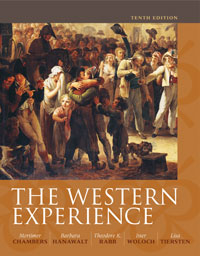| A) | Strong monotheistic religion founded by Muhammad.
|
| B) | Those who submit to the will of Allah. In Western Europe, often referred to as Saracens.
|
| C) | In the Middle Ages, he was the religious and civil ruler of the Muslim empires, as in the Abbasid Caliphate.
|
| D) | "Universal" church; Christian church headed by a pope.
|
| E) | New form of formal, literary writing that used capital letters for the beginning of sentences and lowercase letters for the text.
|
| F) | School curriculum that became the standard program of study in universities. The trivium comprised the verbal arts (grammar, rhetoric, and logic), while the quadrivium comprised the mathematical arts (arithmetic, astronomy, geometry, and music).
|
| G) | Adventure stories told in prose that cover the Viking period to about 1000, when Iceland converted to Christianity.
|
| H) | The Muslim holy book that contains the prophecies Allah revealed to Muhammad; it was written between 651 and 652.
|
| I) | Modern term for the Eastern Orthodox Church, whose main departure from Catholicism is their belief that, in the Holy Trinity, the Holy Spirit proceeds only from the father.
|
| J) | Muhammad's migration from Mecca to Medina in 622; it marks the beginning of the Islamic calendar.
|
| K) | Islamic term for God that derives from the Arabic word al ilah, meaning "The God."
|
| L) | Developed by Cyril, a Slavonic script based on Greek letters.
|





